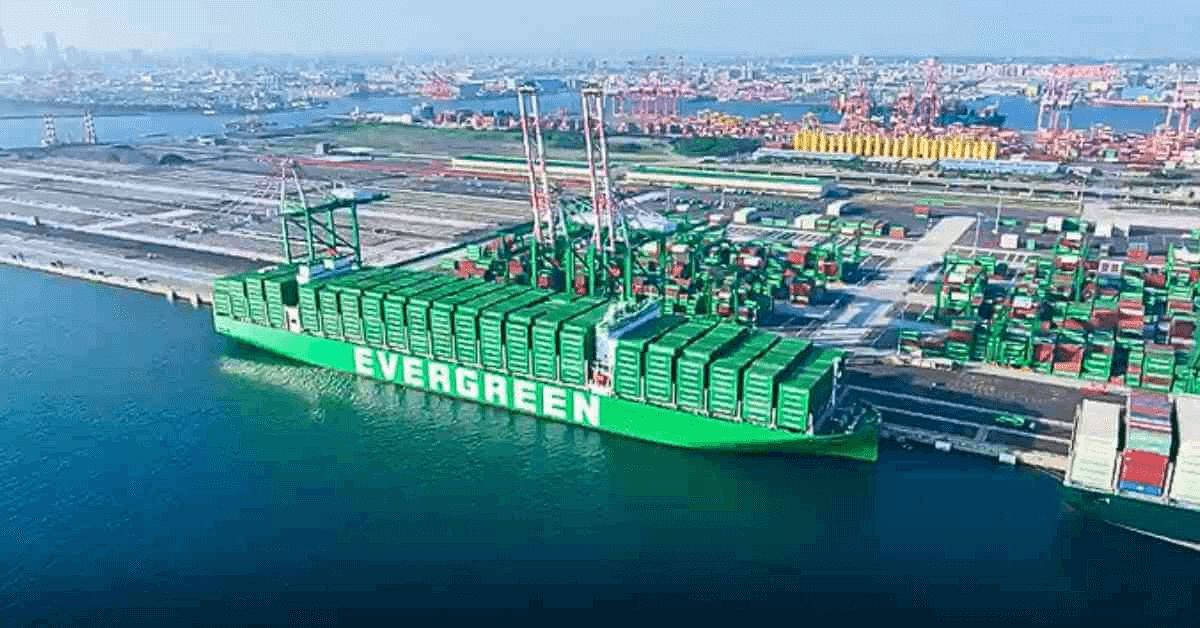The first ship-to-ship transfer of liquid carbon dioxide (LCO₂) recovered from a ship’s emissions has been accomplished in Shanghai. The operation happened on June 19 at Yangshan Deepwater Port’s Shengdong Terminal, when the barge “Dejin” and the Panamanian-flagged cargo ship “EVER TOP” docked. The captured CO₂ was successfully offloaded straight to another vessel by the EVER TOP, the first container ship in history to be equipped with an onboard carbon capture technology.
This comes after it accomplished the first-ever ship-to-shore transfer of captured CO₂ at the same port in 2023. The Onboard Carbon Capture and Storage (OCCS) system allows ships to capture and hold CO₂ from their exhaust while they are at sea.
Retrofitting a large container ship like the 14,000-TEU EVER TOP with this system costs around $10 million, less than half the price of converting the ship to run on methanol or ammonia, which are the current alternatives for reducing emissions. The captured carbon dioxide is not wasted. It can be sold for use in industrial applications, with the potential to generate up to $8 million per year in revenue per ship. This turns emissions, once considered waste, into a commercial asset. A key challenge with carbon capture on ships has been the difficulty of unloading the captured CO₂. Many industrial buyers are located near smaller ports that are not equipped to receive large vessels. This has made offloading costly and logistically complex.
The newly demonstrated ship-to-ship transfer method solves this problem. Instead of requiring specialised port infrastructure, the CO₂ can now be transferred directly from one ship to another while at sea or anchored offshore. This adds flexibility to the process and significantly reduces transportation costs. Du Mingsai, who managed the transfer operation, said that ship-to-ship transfer is far more efficient than traditional methods. One CO₂ carrier can transport dozens or even hundreds of times more gas than a standard tanker truck.
his makes it easier to scale up operations and meet the needs of industrial users in different regions. This innovation completes a full “closed-loop” cycle, starting from carbon capture onboard, followed by liquefaction and storage, and ending with ship-to-ship transfer for delivery to end users. The entire process is now integrated at sea, eliminating the need for heavy port infrastructure. Shanghai’s successful demonstration provides what officials are calling a replicable “Shanghai Solution” for reducing carbon emissions from ships globally.
According to data from the International Maritime Organization (IMO), the global shipping sector emits approximately 1 billion tons of CO₂ annually, accounting for nearly 3% of global emissions. Experts from the Shanghai Institute are now contributing to the IMO’s newly formed working group on OCCS systems. Their experience is expected to help shape global standards and regulations for onboard carbon capture and its safe and efficient transfer between vessels.









